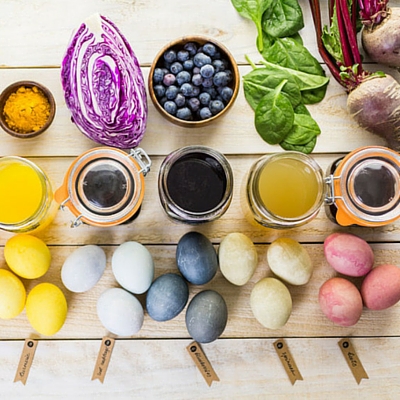
Natural Colors
What are Natural Colors?
Natural colors are food additives derived from natural sources and are used to dye foods and beverages. Also called exempt colors, these pigments are safe for consumption according the the FDA. They come from a variety of sources, such as:
- Fruits
- Vegetables
- Seeds
- Leaves
- Minerals
Origin
Natural dyes have been used to color food for thousands of years. Minerals and various plants have been the source of added color since 300 BC. Paprika, turmeric, saffron, wine, iron and lead oxides and copper sulfate are a few natural coloring agents that are traced back to ancient civilizations.
Synthetic dyes were first discovered in 1865, starting with a mauve dye created by William Henry Perkin. Others were soon found and used in foods, drugs and cosmetics. Most dyes were by-products of coal processing, and known as “coal-tar colors.”
The FDA was awarded oversight over food color additives in 1927, and over the years has defined what dyes were or were not safe for consumption. Synthetic food colors make up a majority of all coloring agents used today. However, in recent years a demand for more clean-label products and concern over negative behavior affects from artificial dyes has created a market for natural color additives.
Commercial Production
Natural color additives mainly come from a variety of plants or minerals. For consistently reproducing the coloring and product results from these additives, natural colors are sold in a highly purified form.
Biotechnology allows for a method that extracts pigment from tissue culture and fermentation, rather than extracting the pigment from whole plants. It allows the final color additive to be more reliable and consistent. It is also less likely to be affected by variations between strains of the source or weather and growing conditions. However, it has a somewhat low yield compared to other methods. Specific manufacturing depends on the the source of the pigment or tissue.2
Application
Natural colors are more sensitive than artificial ones. For one thing, they tend to have a shorter shelf life. They also offer less vibrant colors and are more sensitive to heat and pH. They are not advised to color opaque materials. Natural colors are not as stable or consistent in the final flavor the the product and may also influence taste, odor or texture.3
Natural colors are helpful in creating clean-label. Even though they come from original sources that may be an allergen to some, there is little risk of allergic reactions when used as a color agent. 4
FDA Regulation
There is no GRAS exemption for color additives under the FDA. All color additives must undergo an FDA certification process, except natural colors. These are labeled “exempt colors” and must come from natural sources, mostly plants or minerals. Click here for a full list of FDA recognized exempt color additives for food.
References
- Griffiths, James C. “Coloring Foods and Beverages.” Food Technology 59.5 (2005): n. pag.
- Branen, Alfred Larry, P. Michael Davidson, and Seppo Salminen. Food Additives. New York: M. Dekker, 1990.
- Batista, Ana Paula, Anabela Raymundo, Isabel Sousa, José Empis, and José Maria Franco. “Colored Food Emulsions—Implications of Pigment Addition on the Rheological Behavior and Microstructure.” Food Biophysics 1.4 (2006): 216-27.
- Lucas, Christine D., John B. Hallagan, and Steve L. Taylor. “The Role of Natural Color Additives in Food Allergy.” Advances in Food and Nutrition Research (2001): 195-216.

